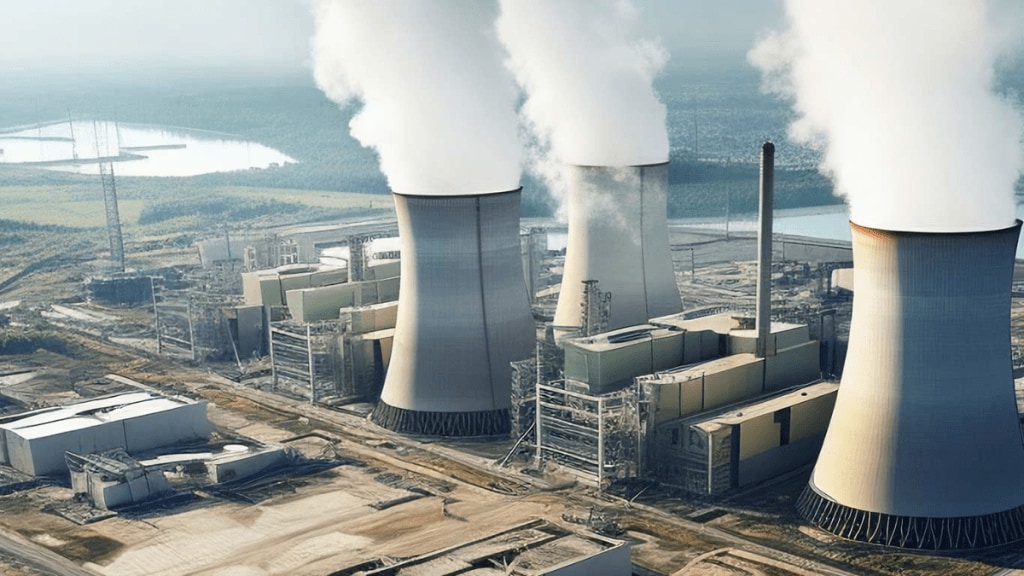The Central Electricity Authority (CEA) has drawn up a plan to raise India’s nuclear power capacity to 100 gigawatts (GW) and envisaged investments of Rs 19.28 lakh crore for this. It also recommended allowing foreign direct investment (FDI) up to 49% in the sector to enable technology providers and equipment suppliers for India’s nuclear goals. The move follows a civil nuclear deal between India and the US that made India a virtual member of the global nuclear club.
The Budget FY26 announced a plan to set up a Nuclear Energy Mission for research and development of small modular reactors (SMRs) with an outlay of20,000 crore to be spent over the next few years. The Atomic Energy Act, 1962, and the Civil Liability for Nuclear Damage Act, 2010, are going to be amended to facilitate the entry of private companies in nuclear power generation.
India’s installed strength of nuclear power is just 8.1 GW or roughly 2% of the total electricity-generation capacity. The US has the highest operational nuclear capacity of 100 GW, France (64 GW) and China (58 GW) taking the next two slots. India has a plan to nearly triple its nuclear power capacity to 22.8 GW by FY32 with 10 plants under construction.
In its roadmap for achieving 100 GW nuclear target by 2047, the CEA suggested a slew of measures including unlocking private sector capital, leveraging domestic technology, and foreign partnerships, while calling for urgent reforms in taxation and liability frameworks to accelerate reactor deployment.
It suggested that under the Civil Liability for Nuclear Damage Act, the liability of suppliers should be capped and reflected in contracts between supplier and operator. The CEA also said that there should be no civil liability under any other law.
Under the Atomic Energy Act, the agency seeks amendments allowing wider participation in atomic energy and in handling of fuel while distancing the government from the process, exploring tariff-based bidding. The Atomic Energy Act, 1962 currently does not allow participation of private sector or even state governments.
Further, suppliers and potential operators are apprehensive about some of the provisions of the Civil Liability for Nuclear Damage Act, 2010 due to uncertainty about extent of liability.
The CEA also recommended allowing state-run NPCIL to retain a larger portion of its internal earnings instead of adhering to the revised higher dividend payment norms which would provide the company a significant source of funds for capacity expansion.
Out of the 100 GW of nuclear capacity, NPCIL and its joint ventures are expected to have a major share of about 54 GW. Therefore, NPCIL would need significant equity and also need to raise substantial debt for expansion.
As of June 2024, NPCIL has equity share capital of about 17,917 crore and reserves of44,349 crore. NPCIL may also consider securitization of its future revenue to generate immediate cash flows needed for expansion, the CEA said.
Further, the CEA estimates a requirement of 2,032 tonne per annum of natural uranium for Pressurized Heavy Water Reactor (PHWR) or Bharat Small Reactors (BSR) by 2032 eventually increasing up to 8,029 tonne per annum by 2047. To increase the fuel supply for nuclear reactors, it has recommended import of natural or enriched uranium through a joint venture of public sector companies, public-private consortium, or through private sector.
The plan also states that to meet the ambitious goals of 2047, there will be a need for capacity and capability enhancement of the Nuclear Fuel Complex and/or additional companies would need to be licensed in the public or private sector.
The plan also encourages increasing domestic uranium production. To facilitate this, the government may consider infusing additional equity in Uranium Corporation of India (UCIL) to facilitate expansion, the CEA said, adding that the private sector may also be encouraged to acquire uranium mines domestically and abroad.
“Working on govt-to-govt agreement (bi-lateral or multi-lateral) with countries of interest (i.e. having significant uranium Reserve – Australia, Mongolia, Russia) and pursue Nuclear Suppliers Group waiver/ membership will also be of great help in ensuring uninterrupted fuel supply and energy security,” the plan said.
It also pointed out that there is a need to re-design the insurance policy offered by the Indian Nuclear Insurance Pool (INIP) managed by the General Insurance Corporation of India, so that operators can be insured for Rs 1,500 crore for each incident, instead of the current floater policy. This will require augmentation of INIP’s capacity.
Many Indian companies – state-run and private -have set their eyes on the nuclear sector given the government’s push. NTPC alone is aiming to commission 30 GW of nuclear capacity by 2047.
Tata Power has also said that it is under discussions with many states, including Orissa, Madhya Pradesh, and Gujarat, to identify suitable land parcels for its nuclear power plants.
L&T and Tata Consulting Engineers too are looking at collaborating with Holtec, which has got the US Department of Energy approval for transfer of the flexible and cost-effective small modular reactors (SMR) technology to India while state-run oil marketing company IndianOil also will be entering the nuclear sector “sometime in the near future.


